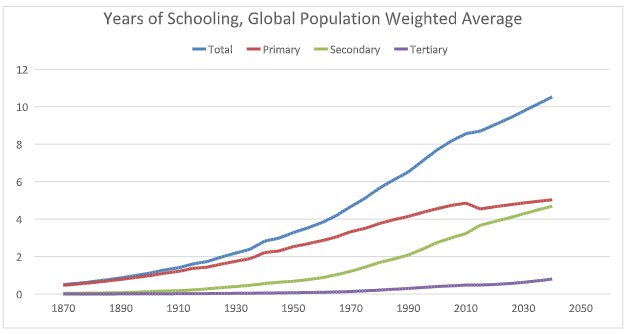One of the real markers of our progress in recent decades is the increased length of formal schooling and the amount of time people are spending in educational settings. That was not always so. Throughout human history, most people were illiterate and oblivious to everything except for their immediate surroundings.
Not everyone is naturally academic, but most people think that the acquisition of knowledge is preferable to a life of total ignorance – as witnessed by the great lengths that typical parents go to in order to ensure quality education for their kids. Thankfully, formal schooling is increasingly available and obtainable throughout the world.
Informal learning is, of course, as old as humanity. Before the advent of writing, however, all of the information that people needed to act in the world was passed down the generations orally. It was only 5,500 years ago that first forms of writing emerged. Early texts tended to deal with codification of laws, keeping of accounts and writing down history.
By and large, schooling was limited to a small sliver of urban-dwelling, freeborn men, and included imperial administrators, tax collectors and merchants. Peasants, who constituted between 80 and 90 per cent of the world’s population until the Industrial Revolution, were almost always too poor to pay for schooling. In any case, low agricultural productivity meant that everyone, including peasants’ children, had to work the land in order to produce enough food to survive.
By the time of classical antiquity, schools were firmly established in Greece, Rome, India and China. While schooling changed a great deal over the last 2,500 years, education was generally short in duration and restricted to a small number of subjects, including reading, writing, arithmetic, theology, law, astronomy, metaphysics, ethics and medical science.
As late as 1870, the total length of schooling at all levels of education for people between the ages of 25 and 64 is estimated to have been only about 0.5 years. In a handful of outliers, such as Switzerland and the United States, it was as high as four years. In France and the United Kingdom, it averaged less than a year. In the world’s underdeveloped regions, such as sub-Saharan Africa and much of Asia, schooling was negligible and would remain so for decades to come.

Things have changed, of course, and human beings throughout the world enjoy more schooling than ever before. To produce the chart above, I have used two datasets compiled by professors Robert Barro from Harvard University and Jong-Wha Lee from Korea University.
The first dataset covered the period between 1870 and 2010, while the second dataset consists of projections between 2015 and 2040. Each dataset contains estimates of educational attainment for the population between the ages of 25 and 64, expressed in terms of years of schooling. The first historical dataset contains the estimated educational attainment in 89 countries and the second projection dataset contains the same data for 146 countries.
The world averages are weighted by population and show the total estimated average years of schooling, as well as the estimates of average years of primary, secondary and tertiary schooling.
As we can see, the total global average length of schooling in 1870 was only 0.5 years. Of that number, primary education accounted for 0.47 years and secondary education for 0.03 years. Tertiary education, while certainly present in Western Europe, North America and part of Asia, was too insignificant to register at a global level. By 2010, Barro and Lee estimate, the global average length of schooling at all levels of education stood at 8.56 years. That year, primary, secondary and tertiary schooling amounted to 4.85 years, 3.23 years and 0.48 years respectively.
By 2040, the four measures of schooling will increase to 10.52 years (total), 5.03 years (primary), 4.69 years (secondary) and 0.8 years (tertiary).
In 2040, a new study in the Lancet estimates, the global life expectancy will reach 74 years for men and 80 years for women. That means that men will spend over 14 percent of their lives in school, while women will spend over 13 percent of their lives in school. Contrast that with 2010. Eight years ago, global life expectancy for men and women was 68.6 years and 72.8 years respectively. That means that men and women spent 12.5 percent and 11.8 percent of their lives learning.
The relationship between education and human development is a complex one. Schooling does not make people freer, just look at Cuba, or electorates wiser, just look at Argentina. But, education increases human capital, which under conditions of relative freedom can contribute to economic growth and development. Moreover, knowledge is itself an inherently a good thing. Of which we could all use a bit more.


